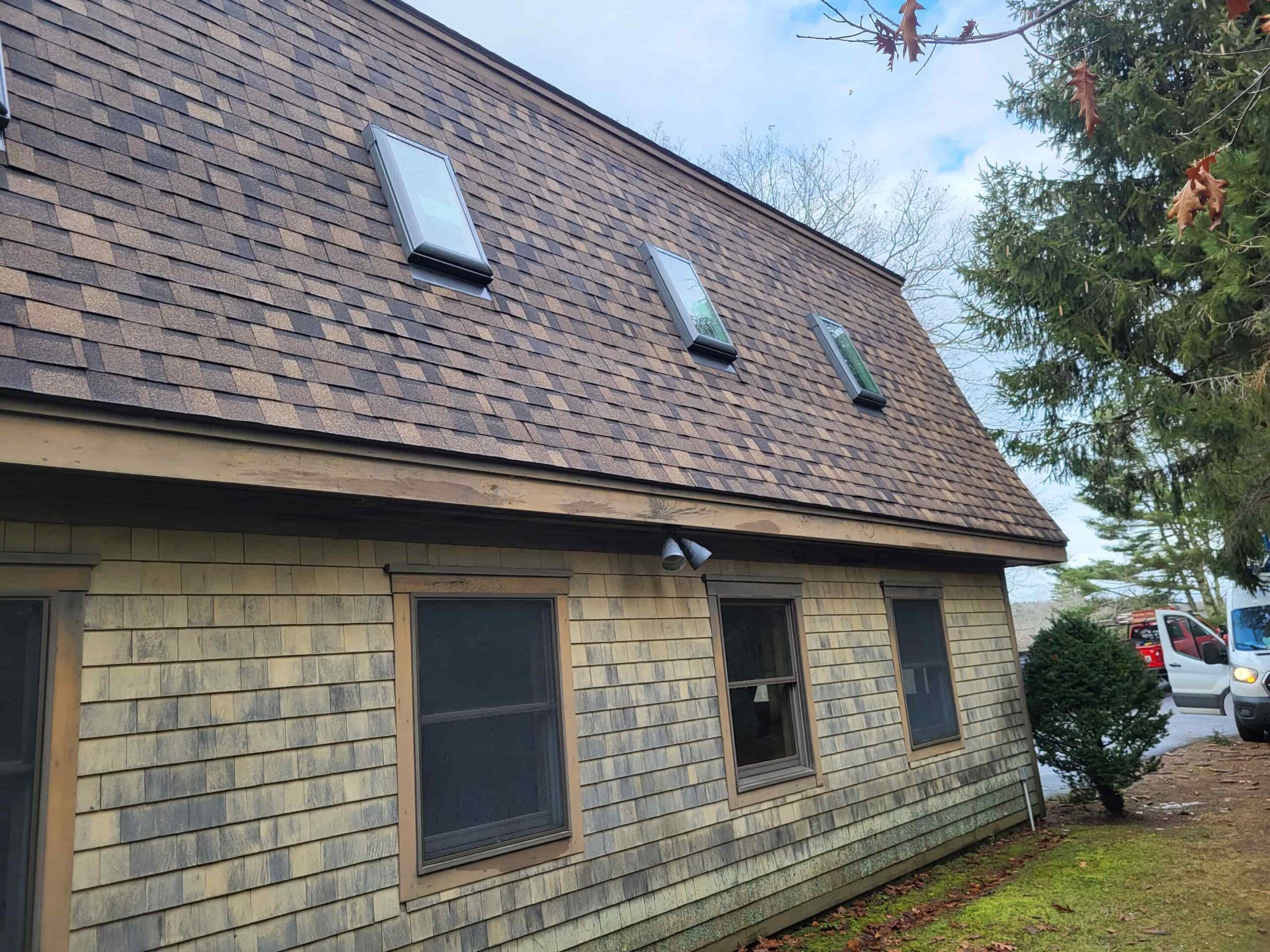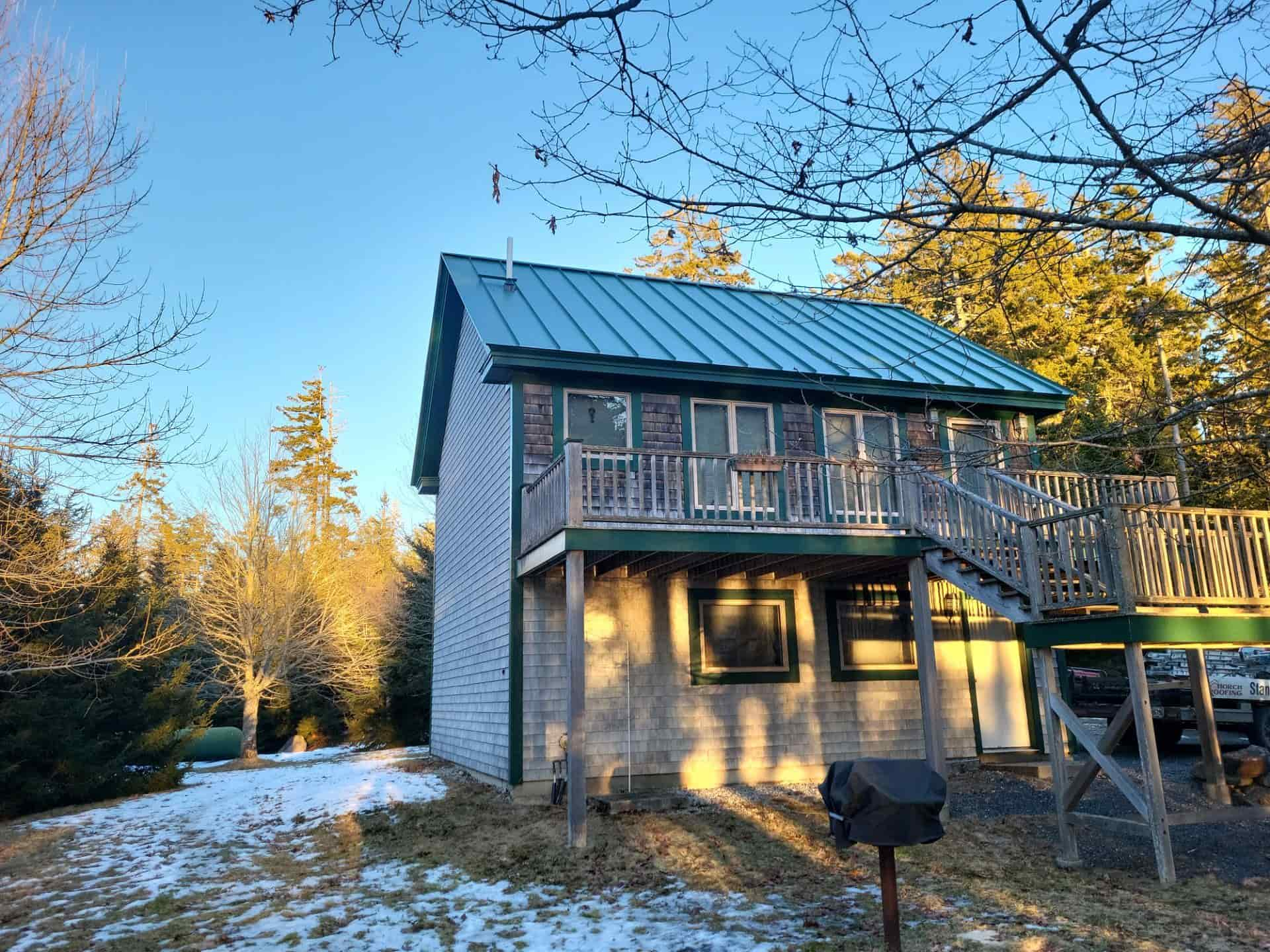In Maine, winters can be as unpredictable as they are harsh. Snow often arrives early, temperatures swing sharply between freezing and thawing, and strong coastal winds make conditions even tougher. For anyone choosing a new roof, these realities should be the first consideration.
That’s why many property owners in Damariscotta look to trusted roofing contractors for guidance on materials that can handle winter while still meeting design and budget goals. Both asphalt shingles and standing-seam metal panels have distinct advantages, but how do they compare when the season turns severe? Keep reading for a closer look.
What is the better roofing choice for cold climate challenges?
Cold weather tests the strength and flexibility of every material, and nowhere is that more evident than in Maine. While there are plenty of misconceptions about how roofs perform in winter, it’s true that asphalt and metal behave differently once temperatures drop. To make those distinctions clearer, here’s a closer look at how each option handles the specific challenges the season brings.
1. Handling snow & ice
As one of the biggest winter challenges, snow and ice management is the first thing we’ll compare these materials in:
Asphalt shingles
- Shingles have a textured structure that helps hold snow in place instead of letting it slide freely. This prevents dangerous snow slides, but also increases the weight on the structure.
- When attic insulation or airflow is uneven, the snow won’t melt evenly either, which creates conditions for ice dams to form at the edges.
- Shingles work best with a properly ventilated attic and clear gutters.
Standing-seam metal
- The smooth, interlocking design of metal panels allows snow and ice to slide off naturally, so there won’t be unnecessary weight put on the structure.
- Seams are raised above the drainage line, so meltwater is directed away instead of being forced underneath.
- Though sudden slides are dangerous, snow guards for standing-seam metal roofs solve the issue in most cases.
2. Low temperatures
No matter the roof, low temperatures in winter can present challenges for the structure. Here’s how they affect these materials:
Asphalt shingles
- Flexible asphalt can stiffen in deep cold, which makes it more prone to cracking if debris or ice shifts above it.
- Repeated freeze–thaw cycles can wear away the granular surface over time.
- Shingles typically last their full service life if they’re installed correctly and supported by a stable deck that doesn’t flex under load.
Standing-seam metal
- Metal naturally contracts and expands with temperature changes, and the standing seam design accommodates that movement.
- Panels are fastened in a way that allows sliding, so there’s less stress on fasteners and seams.
- Metal stays durable and watertight even after decades of exposure to cold cycles.
3. Energy loss
Even when you choose the most energy-efficient roof material and color, some energy will escape. Still, it’s smart to minimize the issue. Here’s how the two materials do it:
Asphalt shingles
- Darker colors absorb heat from the sun so that interiors can stay warm during the day.
- With attic insulation and proper sealing, shingles can support good winter efficiency, though they don’t reflect sunlight as effectively as metal.
- While ice dams are a common issue for many homes that have asphalt shingles, that’s another issue solved by proper insulation and ventilation.
Standing-seam metal
- Reflective finishes bounce sunlight away so interior temperatures can stay stable, especially during warmer days.
- Paired with a ventilated airspace beneath the panels, metal coverings effectively prevent heat loss and condensation buildup.
- Reflectivity also benefits energy savings in summer for year-round efficiency.
4. Winter maintenance
For most people, the shorter the “roof winter maintenance” checklist, the better. Generally, it all comes down to accessibility and durability under stress. Here’s how the materials differ:
Asphalt shingles
- They need regular checks for built-up debris, fallen branches, or ice, especially after major storms.
- Any damaged shingles should be replaced quickly to avoid leaks.
- Mid-winter patching and replacements with cold-weather rated methods and materials are usually not an issue.
Standing-seam metal
- Standing-seam metal needs less hands-on maintenance because its smooth surface resists buildup and sheds precipitation.
- Occasional inspections for fastener movement, sealant wear, or snow guard stability are recommended.
- These systems usually only need occasional inspections for fastener movement, sealant wear, and snow guard stability.
- Repairs are less frequent, but they often require specialized tools for panel adjustments.
5. Overall costs
Budget often drives material choice, but long-term expenses can tell a different story. It’s not a secret that standing-seam metal systems are a premium option that comes with a bigger price tag, but how do the overall costs compare? Let’s take a look:
Asphalt shingles
- Installation costs are lower because the material is easy to procure and handle.
- In case of emergency repairs during winter, fixing shingle roofs is usually straightforward and inexpensive.
- Depending on product grade and exposure, the lifespan averages 17 to 25 years.
Standing-seam metal
- Since the system requires precision and specialized tools for installation, the upfront investment is typically higher.
- Lifespans are often as long as 50 years with minimal upkeep and repair needs.
- Metal roofs are constructed for fire-resistance and are generally hard to damage, so your insurance premiums may end up being lower, on top of the resale value they add.
6. Looks & convenience
Visual appeal and everyday practicality matter for any property, especially when upgrades also serve as an investment. Let’s dive into how shingles and standing-seam solutions perform:
Asphalt shingles
- They are available in numerous colors and profiles that complement almost any architectural style.
- Repaired sections easily blend with existing ones.
- Familiar appearance makes it a popular choice across Maine neighborhoods.
Standing-seam metal
- Sleek, modern lines create a clean appearance that works with traditional homes and instantly boosts contemporary ones.
- Coatings resist fading and staining, so the look stays consistent for decades.
- Experts fabricate panels on-site for a perfect fit while also minimizing waste and cutting down on installation time.
Is a metal or asphalt roof better for your home?
Both materials have proven track records in Maine’s demanding winters. If you’re comparing a metal roof vs shingles, the pros and cons often end up being balanced. The ideal choice depends on your property’s structure, budget, and maintenance goals.
Asphalt shingles balance affordability and curb appeal, and with regular care, they usually deliver solid performance for many years. Standing-seam metal, while more expensive at the outset, provides unmatched longevity and reliability against snow, ice, and wind. Either option can perform well in Damariscotta’s climate when installed by skilled professionals using quality materials.
 Who is Damariscotta’s top choice for experienced roofing contractors?
Who is Damariscotta’s top choice for experienced roofing contractors?
At Horch Roofing, excellence is built into every project. Our certified specialists install asphalt shingles for dependable value and style, standing-seam metal panels for lasting strength against snow and wind, and EPDM rubber systems for low-pitched surfaces, with seamless gutters to complement each. We use premium materials, meticulous on-site fabrication when needed, and techniques proven to withstand the harsh local climate.
Whatever the scope of your project, our work is tailored for beauty, performance, and longevity. And when emergencies arise, our responsive repair and dispatch services are always ready. Whether you’re close to Round Top Farm or across town in Damariscotta, we’re here to elevate your home’s protection. Call today to schedule your free estimate.



 Who is Damariscotta’s top choice for experienced roofing contractors?
Who is Damariscotta’s top choice for experienced roofing contractors?